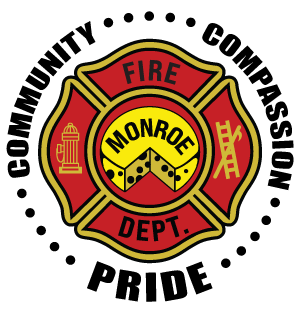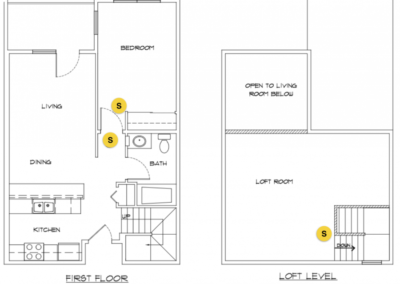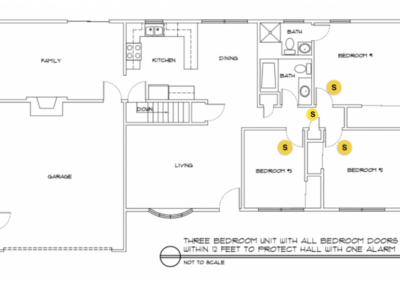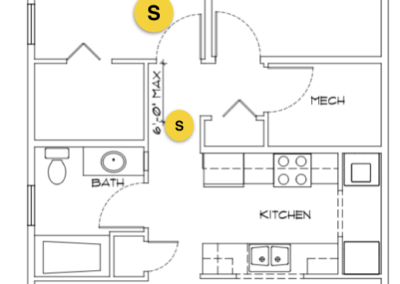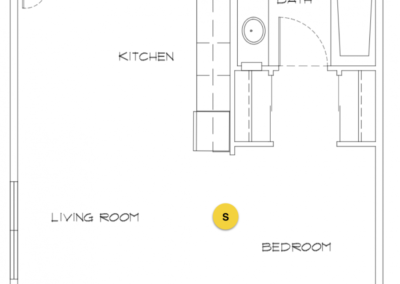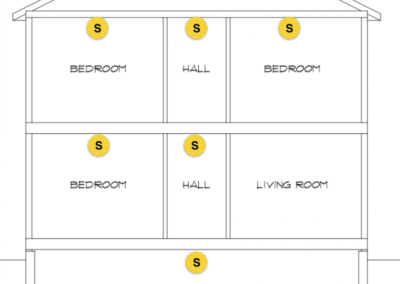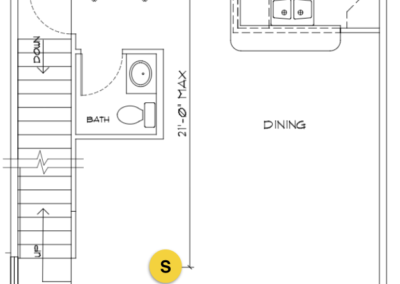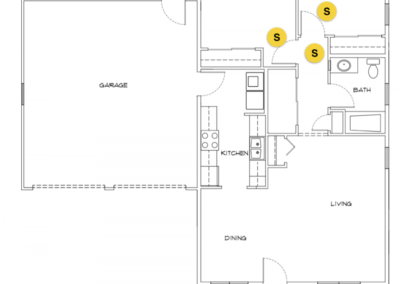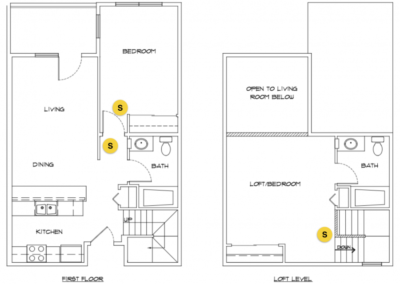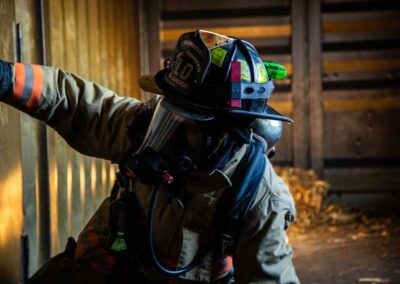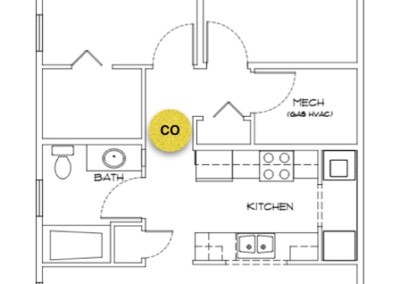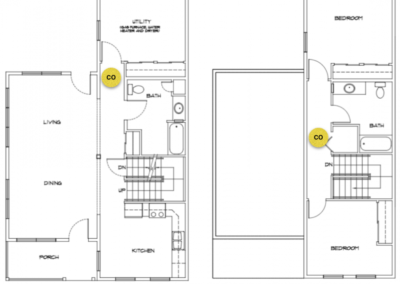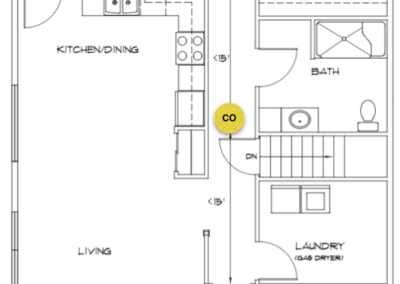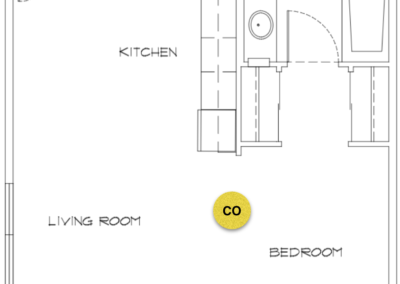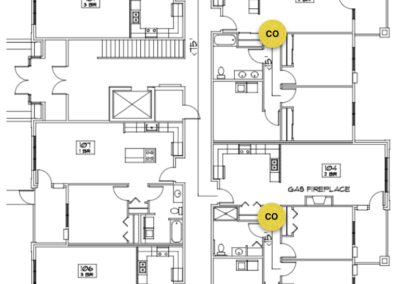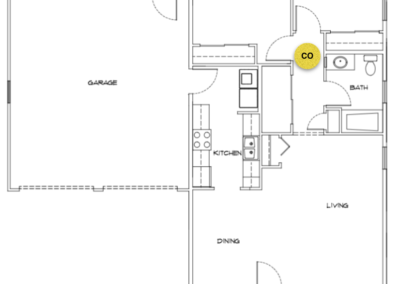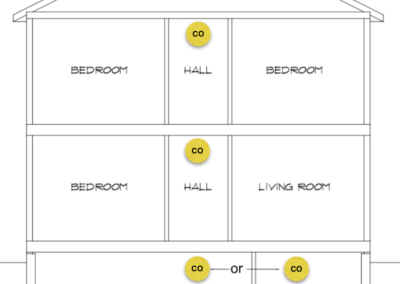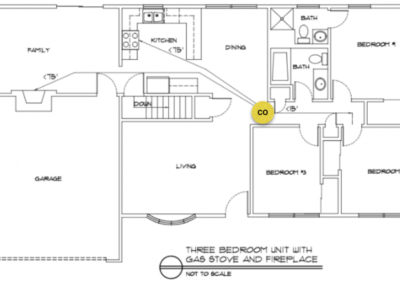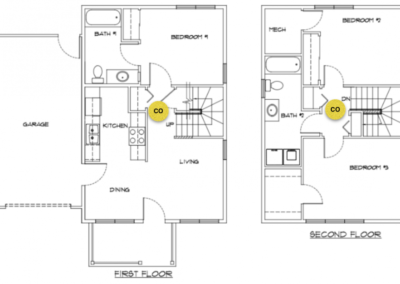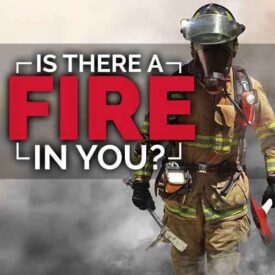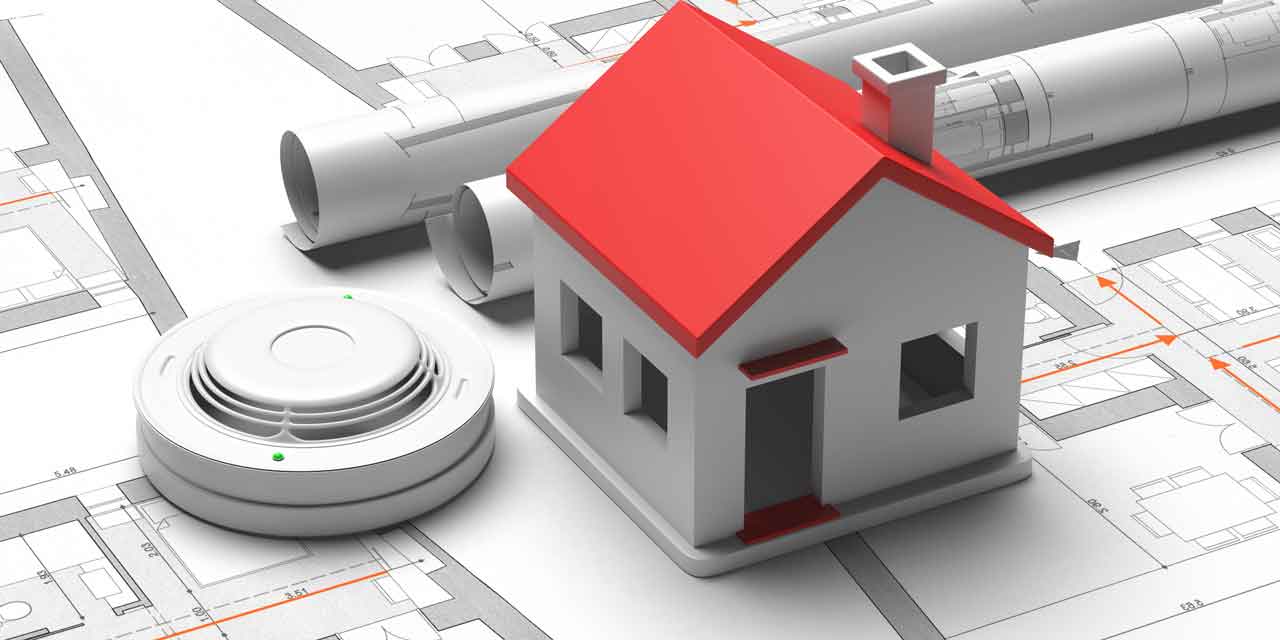

The Monroe Fire Department Is Committed To Your Safety.
Browse the topics in the menu to take advantage of the free resources we provide, from fire and injury prevention to educational programs for children.
Smoke Alarms
Tenant Fire Safety
The smoke alarms in your apartment are there for your protection. NEVER tamper with them or remove them.
Report to the building owner or manager immediately any doors, lighting, smoke detectors or fire extinguishers that are missing or not working properly.
Cooking Fires
- Unattended cooking is the #1 cause of residential fires. Stay in the kitchen and keep an eye on your stove. Wear short or close-fitting sleeves and turn pan handles toward the back of the stove to prevent spills and burns.
- Keep cooking surfaces clean to prevent food and grease build-up.
- If the alarm goes off from cooking, open a door or window. Do not attempt to disable the smoke alarm.
- If the fire is still confined to a pan, slide a tight-fitting lid over the flames to smother a grease or oil fire. Then turn off the stove and leave the lid on until the pan cools. Do NOT attempt to move something that is on fire.
- Some small fires may be smothered with baking soda. Never use water or flour on cooking fires.
- For oven fires, shut the oven door and turn off the stove to smother.
- If the fire is spreading beyond the container OR if you have ANY doubts about containing the fire, leave the building immediately and call 911.
Evacuation
- Develop and practice a fire escape plan with roommates/family and know at least two ways out of each room.
- Select a safe meeting place outside and away from your building. Make sure everyone knows where it is and that they should go there once they have evacuated the building.
- Doors to basements, laundry, and furnace rooms are “fire doors” that must be closed at all times (never propped open). These doors are meant to inhibit the spread of smoke and fire. Keeping them closed during a fire saves lives and property.
Fire Extinguishers
- If the fire is not spreading AND you are familiar with the proper use of fire extinguishers, you may then attempt to extinguish the fire. Know both your limits and the fire extinguisher’s limits.
- Be familiar with use BEFORE fire starts. Remember PASS…Pull the pin, Aim low at base of the fire, Squeeze lever to discharge, Sweep nozzle from side to side.
- ALWAYS keep your back to an unobstructed exit that is free from fire.
Grilling
- Local fire ordinances prohibit open-flame cooking devices (charcoal, wood, LP, etc.) from being used on combustible balconies unless the balcony is equipped with automatic fire sprinklers. Grills must be used at least 10 feet from the building.
- Make sure the coals are completely cooled down with water before disposing of them (coals may stay hot for up to 72 hours after use).
- Make sure all ashes are contained in a non-combustible container.
Candles
- Make sure candles are in a sturdy holder and kept at least 1 foot from anything flammable.
- ALWAYS blow out candles before leaving the room or going to sleep.
Smoking Materials
Improperly discarded smoking materials are the leading cause of fatal fires! Make sure smoking materials are fully extinguished by dousing them in water and disposing of them in a non-combustible container.
In the Event of a Fire
- Resist the temptation to attempt to fight the fire yourself.
- Evacuate the building immediately through your nearest exit.
- In multi-family structures, sound an alarm as you leave.
- Call 911 to report the emergency after you’ve left the building.
Final Notes
- An estimated 40% of fatal fires involve the use of alcohol by victims, their family members, or friends.
- Leave hallways clear of clutter (garbage bags, bicycles, etc.). In the event of a fire, the hallway may be your path to safety.
- After move-in, tour hallways, basement and common areas to locate exits (doors and windows). Know where fire extinguishers are and which fire doors should be kept closed.
- Inside your apartment, locate smoke and carbon monoxide detectors. Make sure they are working. Report any malfunctions to the building owner or manager.
Tenant & Owners Responsibilities
Building Owner’s Responsibilities
- Replace the battery in all smoke alarms each time the lease is renewed or once a year, whichever period of time is shorter, or as recommended by the manufacturer.
- Replace broken, damaged, or missing smoke alarms with smoke alarms that meet these stated requirements.
- Provide all tenants with the manufacturer’s maintenance and testing instructions.
When notified of a broken, damaged, or missing smoke alarm, building owners have five days to repair or replace the alarms. Any battery-powered alarms found to be inoperable shall be replaced by the owner with UL listed smoke alarms.
Tenant’s Responsibilities
- Test all smoke alarms in your unit once a month.
- Notify the owner if a smoke alarm becomes inoperable.
Important Reminders
All smoke alarms should be replaced every ten years unless the manufacturer specifies a different service life. No person shall tamper with, remove, alter, damage, or otherwise render any smoke alarm inoperable.
Where To Place Your Smoke Alarms
- In each bedroom
- In each sleeping area
- Within six feet of each door leading to a bedroom or sleeping area of each unit
- On each floor of the building
Smoke alarms are not recommended for kitchens, bathrooms, or garages where cooking fumes, steam, or exhaust fumes could result in false alarms.
Do not install an alarm in an attic or other unheated spaces where humidity and temperature changes could affect the alarm’s operation.
Scroll through the floor plan renderings below for examples of smoke alarm placement.
Smoke Alarm Placement Examples:
Carbon Monoxide Alarms
Carbon Monoxide FAQs
Does your home have a Carbon Monoxide Detector? It could save your life!
What is Carbon Monoxide (CO)?
Carbon monoxide is a colorless, odorless, poisonous gas that is produced by the incomplete burning of solid, liquid, and gaseous fuels. Appliances fueled with gas, oil, kerosene, or wood — such as stoves, water heaters, and furnaces — may produce CO.
Each year, hundreds of people die, and thousands are treated in hospitals, due to carbon monoxide poisoning.
What are common CO sources in your home?
Fuel burning appliances such as:
- Furnaces
- Stoves & Ovens
- Water Heaters
- Dryers
- Room/Space Heaters
- Fireplaces and Wood Stoves
- Charcoal Grills
- Automobiles
How to prevent CO poisoning?
- Make sure appliances are installed and working according to manufacturer’s instructions and local building codes. Have the heating system (including chimneys and vents) inspected and serviced annually by a professional, which includes inspecting for blockages, corrosion, partial and complete disconnections, and loose connections.
- Install CO detectors
- Never use gas appliances such as ranges, dryers, or ovens for heating your home.
- Never burn charcoal inside a home, garage, vehicle, or tent.
- Never operate un-vented fuel-burning appliances in any room with closed doors or windows or in any room where people are sleeping.
- Never use portable fuel-burning camping equipment inside a home, garage, vehicle, or tent.
- Never leave a car running in an attached garage, even with the garage door open.
What CO level is dangerous to your health and what are the symptoms of CO poisoning?
The health effects of CO poisoning depend on the level of CO and length of exposure, as well as each individual’s health condition. The concentration of CO is measured in parts per million (ppm).
According to the Consumer Product Safety Commission (CPSC), health effects from exposures to CO levels of approximately 1 to 70 ppm are uncertain, but most people will not experience any symptoms, although some heart patients may experience an increase in chest pain.
As CO levels increase and remain above 70 ppm, symptoms may become more noticeable (see below). As CO levels increase above 150-200 ppm, disorientation, unconsciousness, and death are possible.
Symptoms of CO poisoning include:
- Headache
- Nausea
- Fatigue
- Dizziness
- Shortness of breath
- Sleepiness
- Confusion
In many cases of CO poisoning, these symptoms have been mistaken as the flu.
What type of CO detector should you buy?
CO detectors either operate on battery power or directly off your household current, and they use different sensor technologies to sense the levels of CO in your home. Regardless of the different types of CO detectors, all detectors sold on the market today should conform to minimum sensitivity and alarm characteristics defined and verified by the Underwriters Laboratory (UL). So the primary guide to selecting a CO detector is to make sure that it is UL listed. Outside of this, select a CO detector that meets your application requirements and make sure to follow the installation and maintenance instructions (e.g. battery replacement schedule) provided by the manufacturer.
How many and where should you install CO detectors?
It is recommended that a CO detector be placed on each level of your home. At a minimum, you should have a CO detector located outside and near sleeping areas.
After covering the sleeping areas, the next best location for an additional CO detector is in the area of any major gas burning appliances such as a furnace or water heater. In general, follow the manufacturers’ instructions for installation location.
Although CO is about the same weight as air, it is often recommended to place CO detectors high since the CO may be contained in the warm air coming from the combustion appliance. Also, when installing CO detectors in the areas of major gas burning appliances, do not install the detector within approximately 15 feet of the appliance itself. Again, follow the manufacturer’s instructions.
What should you do if the CO detector alarm sounds?
First of all, never ignore an alarm and do not panic! Although exposure to high levels of CO over prolonged periods of time can be life-threatening, a large number of instances that activate the CO alarm are not life-threatening and do not require calling 911. To determine the need to call 911, ask the following question to everyone in the household.
“Are you feeling sick and/or experiencing the “flu-like” symptoms of dizziness, nausea, or headaches?“
Yes: Immediately evacuate the household to a safe location and call 911. The best initial treatment for CO exposure is fresh air followed by treatment from a physician.
No: Check to see if there is an obvious reason such as a low battery or end of life that caused the carbon monoxide detector to activate. Carbon monoxide detectors alert residents through either a pre-recorded voice command or a series of “beeps”. Often there is a label on the back of the detector that will explain what the series of “beeps” means. Most carbon monoxide detectors have a life span of 7-10 years. There will be a manufacture date located on the back of the detector. Replace the detector it the manufacture date falls within the 7-10 year age range.
If the carbon monoxide detector is less than 7-10 years old and the battery is in good condition, turn off any gas appliances or equipment and open doors and windows to help ventilate your home with fresh air from outside. After completing this, occupants are urged to contact your local qualified heating contractor to inspect your appliances for possible problems. NOTE: If at any time during this process someone in your household experiences “flu-like” symptoms, immediately evacuate the home and call 911.
Where To Place Your Carbon Monoxide Alarms
- On each level of your home
- Outside and near sleeping areas such as bedrooms
- In the area of any major gas-burning appliances such as a furnace or water heater
- At least 15 feet from gas-burning appliances (not any closer)
- On the wall or ceiling. The weight of CO is very close to that of normal atmosphere, so the mounting height does not matter.
In general, follow the manufacturer’s instructions.
Scroll through the floor plan renderings below for examples of CO alarm placement.
Carbon Monoxide Placement Examples:
Fire Extinguishers
Protect your home and vehicle
Protect your home and vehicle with a fire extinguisher.
Tips for choosing and using fire extinguishers (source: U.S. Fire Administration)
Where to Replenish or Recycle Your Fire Extinguisher:
Fire extinguishers require special handling for disposal or replenishment. Extinguishers can be taken to certain retailers, including those listed below. There may be a fee for these services. We recommend you call ahead to confirm any fees or special instructions.
How to Use A Fire Extinguisher:
